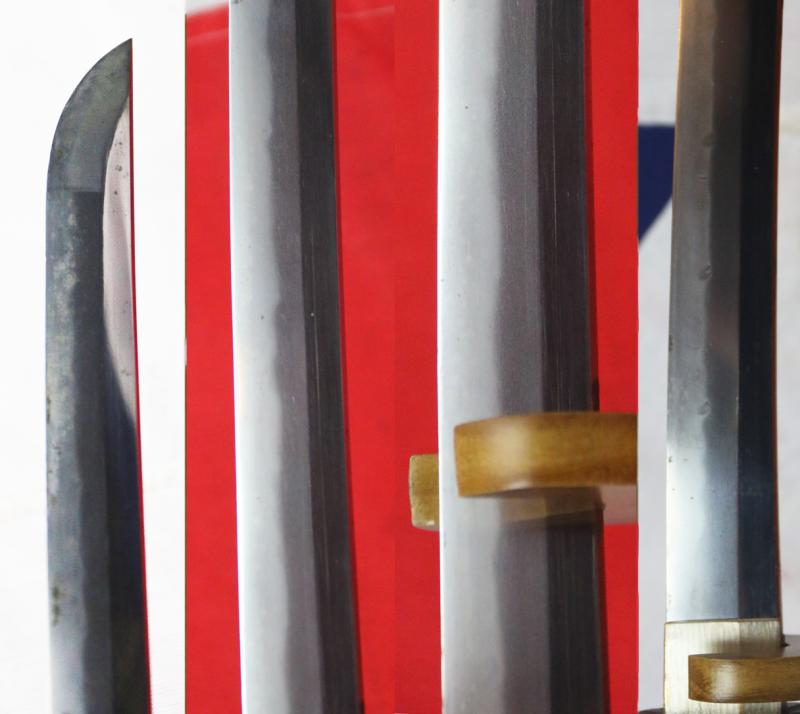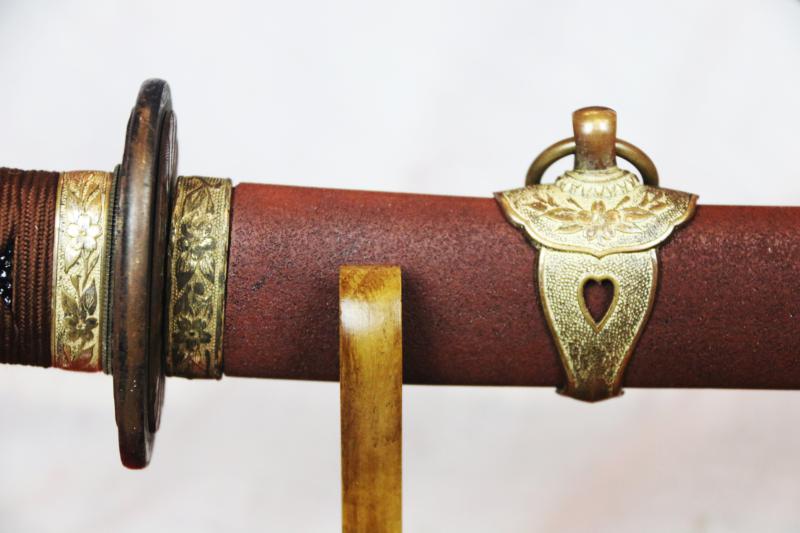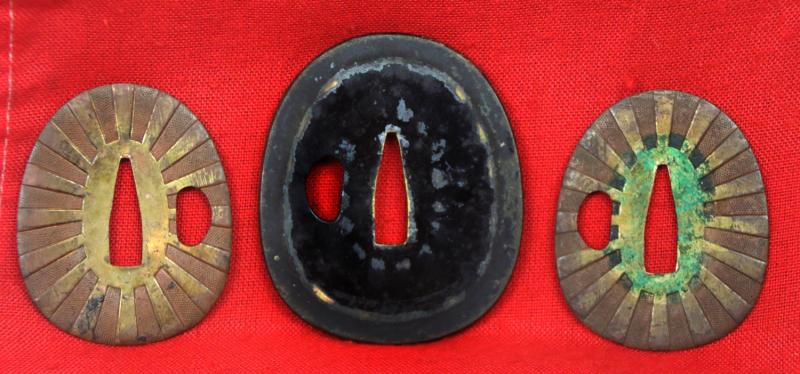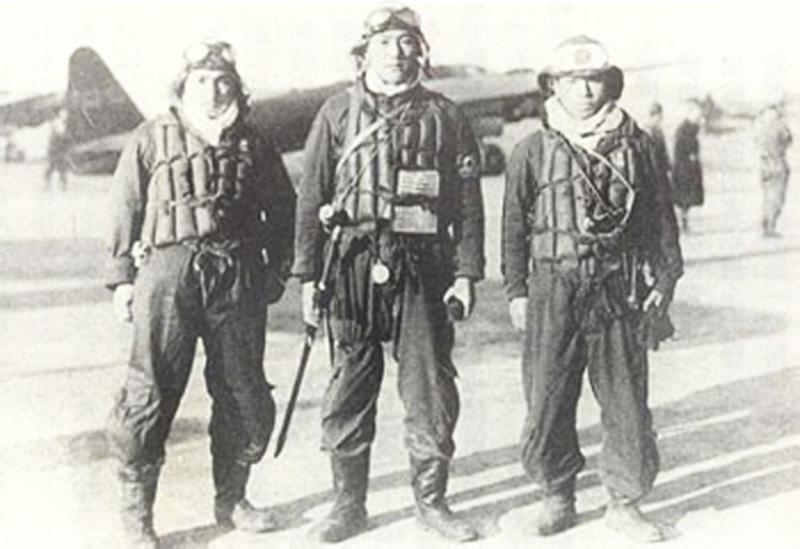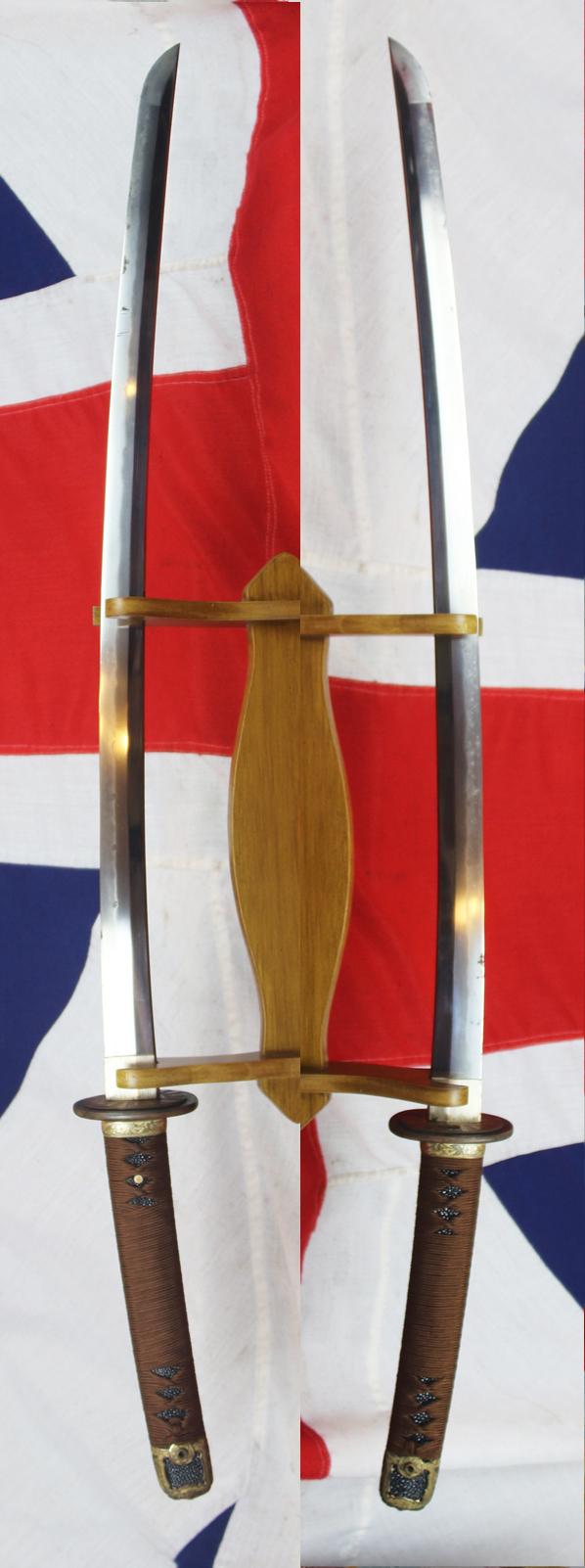A Superb & Rare, Near Mint, WW2 Imperial Japanese Naval Officer's Kai Gunto Sword Tachi. Signed 23rd Generation Fujiwara Kanefusa Saku Kore Mint Condition Blade, with Unusual Brown Ishime Lacquer Saya, Brown Silk Battle Wrapped Tsuka, On Black Samegawa
The sword is inscribed 濃州 関 住 二 代, 藤原 兼 房 作 之. The 23rd generation Kanefusa who was born in 1900.
濃 ,州 Noushu,
関住 SekiJyu 、
二十三 23、
代dai,
藤 原 fujiwara
兼 房 Kanefusa,
作 saku,之kore
In our opinion this is a "near impossible to better" WW2 Japanese officer's sword, likely the best example of its kind, by Kanefusa, available on the world market today! An original, WW2 Naval officer's kai gunto sword, used and carried by of an officer of the {formerly} divine Emperor Hirohito's Imperial Navy in WW2. The blade had a few light stains but it has just returned from the stains being professionally removed by a Japanese trained polisher and it now looks mint or better. Gunome, Midare or Gunome-Midare hamon. Some kanefusa blades bear inscriptions about awards or being prize winning blades. Sho or Seki tang stamps may appear on the nakago. Some of his naval officer's swords were probably a special order from a group of naval officers with association to the Minatogawa battleship.
The Kanefusa lineage of swordsmiths of Mino Province dates back to the Muromachi era in the 1400's. The 23rd generation Kanefusa worked during the WW II era and was a direct descendant of this famous line of swordsmiths. This lineage continues today with the 25th generation Kanefusa. The 23rd generation Kanefusa's name was Kato Koichi. He was born in 1900. During the Showa period he studied under Kato Jumyo and worked in Seki (Mino / modern Gifu prefecture). During the war years he made many blades for the military, both army and navy, and for civil officials. He won numerous awards in sword exhibitions and contests during this period. He was ranked 1st Seat (National Swordsmith) in the 6th Exhibition of Swords held in 1941 (Slough). He was ranked Kibin no Retsu in 1942 by Kurihara Hikosaburo at the Tosho Banzuke (J.Kim). Many of his blades are signed as being prize winning blades. Blades by the 23rd generation Kanefusa have received origami from the NBTHK or NTHK. This school of swordsmiths is noted for making a special style of hamon known as "Kanefusa midare".
Upon Japan’s surrender the Emperor had to surrender his divine status.
Ideal for the collector of the very best surviving officer's swords of WW2.
A rare 1937 pattern Kai Gunto, with a fine signed blade. With all it's original gilded mounts and fittings, with near mint conserved dark brown ishime stone lacquer saya. Traditional pattern naval style flattened knot battle-wrap ito over black samegawa. The blade is absolutely near perfect and near flawless, with all it's original finish, and fully signed tang. It has its original naval pattern ‘rising sun’ tachi tsuba with twin large seppa dai. This sword would, effectively, be near impossible to upgrade if you wanted the best possible available, regulation, deluxe grade tachi sword, as commissioned by a Japanese naval officer in WW2, in absolutely superb, conserved, condition. Only the tsuba has signs of old storage marks. Effectively, it appears just like the day it was surrendered in 1945 or better
Brown lacquer sayas are rare for naval swords, with black the most commonly found colour, although, a brown polished rayskin option was popular, but a very expensive option at the time, though a brown lacquer finish, with a single belt mount, finish is rarely seen.
The illustrative photo shows three Imperial Japanese Naval flying officers, the central figure carrying the same sword.
The air crewmen of a Ginga bomber that hit the allied aircraft carrier, Randolph. From left to right): Chief Flight Petty Officer Takeshi Igai (navigator), Lieutenant Koetsu Fukuda (pilot), and Chief Flight Petty Officer Kenji Ota (radioman).
The WW2 Japanese pilots, by tradition, carried their kai gunto swords aboard their planes, in a special metal almost cylindrical case affixed to the cockpit side, including the kamikaze pilots, which might be another reason that kai gunto swords are rare to find, as most pilots and their planes perished in combat, as did so many of the Imperial Japanese Naval combat vessals, that were sunk by the allied fleets. They carried their sword airborne in WW2 as part of their bushido tradition, in that, although they might never face hand to hand combat on land, unless if they landed in an emergency or survived a crash on land, but if they were to perish in their aircraft the sword would still be by their side.
Code: 25395



